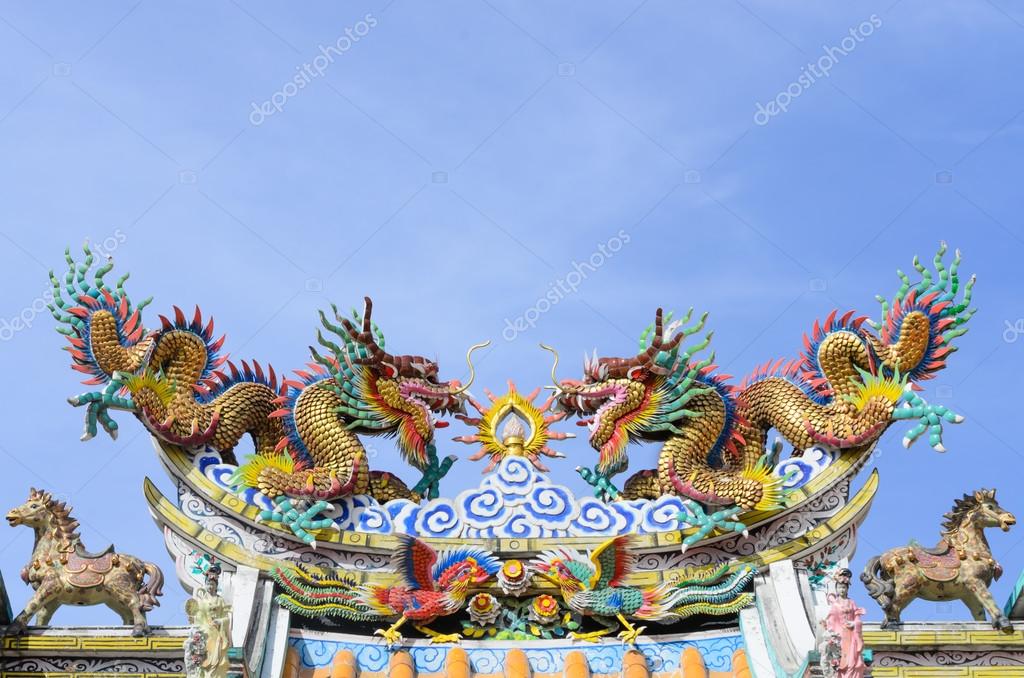Chinese Dragon Orb
Dragon imagery is found in many traditional Chinese art applications such as textiles, paintings, sculpture, vases, and so on. The symbol of the dragon is used in feng shui at large and small scales in everything from describing mountainous landforms to wearing a coin-sized dragon talisman around the neck. GIF AODGolden Chinese dragon. Our Chinese dragon statue welcomes an oriental theme and highlights a dragon holding an orb. The dragon sculpture is made of bronze. Normally ships in 12-16 weeks. If you need this produced for shipment to you, please be advised there is a 50% deposit we need to make to the factory to commence production. Delivery is 12-16 weeks because it.
By Stephen Lee

Dragons are typically regarded as highly volatile and destructive creatures, especially in European mythology. This is usually not the case when referring to dragons in Asian mythology. In many Asian cultures, dragons are portrayed to have longer beards and are considered to be bringers of clouds and rain which correlates to the belief that they resided in rivers, lakes, and oceans (Drinnon). In Korean folk mythology, dragons were known to be Imugis (lesser dragons). Koreans thought that an Imugi could only become a true dragon if it caught a Yeouiju (yoo-ee-ju) or a dragon orb which had fallen from heaven and meant that whoever could wield this dragon orb was blessed with omnipotent abilities and the ability to create anything (Volle). Thus Imugis were considered only a close relative to the dragon. Imugis physically resembled dragons, however they were hornless and cursed and therefore were unable to become dragons. Another belief is that Imugis must survive one thousand years before becoming a dragon. They are considered to be benevolent and giant creatures who dwell near water or caves and sightings of them are commonly associated with good luck.
The Korean mythology of dragons stemmed from China and India. Archaeologists discovered dragon statues in Henan which is widely known as the place where Chinese civilization began. The civilization that created the statues likely shared the same perception of dragons with ancestors of Koreans. The main similarities between Chinese and Korean mythology is the way both cultures recognized dragons. This mainly connected to the appearance and the associations of the dragon which are rain, luck, and power (Volle). The story of the dragon in Korean culture came from the mythological creature of Indian origin and member of the n?ga, family of serpentine creatures who protect Buddhism. Dragon lore in China is believed to have existed independently for centuries even before the introduction of Buddhism. It was only until 9th century AD when the Chinese started incorporating the dragon into Buddhist thought.
Dragons were displayed on robes for royalty to wear as a symbol of power. It is important to note the history of these robes as they played a very important part in representing the status of the people who wore them. The Joseon Dynasty was a Korean Dynasty which lasted about 5 centuries (Britannica). During this time, the government was ruled under a monarchy which meant that rulers had absolute authority. The Joseon Dynasty was a Korean Dynasty which lasted about 5 centuries and was founded by Taejo Yi Seong-gye. The culture of the Joseon Dynasty was heavily influenced by the imperial culture of the Ming Dynasty. During this time, Confucian ideals and doctrines were embedded in Korean society. Neo-Confucianism was established as the state's ideology. Joseon centralized its rule over the territory currently known as Korea and saw the peak of classical Korean culture, trade, literature, and technology. However, the dynasty was exhausted during the late 16th and early 17th centuries, when invasions by the neighboring states of Japan and Qing nearly overran the peninsula, which led to the advent of harsh isolationist policies for which the country became known as the 'hermit kingdom' (Britannica). The government was ruled under a monarchy. The kings had absolute authority, however the total power of the kings varied with political circumstances. These circumstances include the precedents set by earlier kings, a code of law known as the Gyeongguk Daejeon, and Confucian thought (Britannica). The king was required to have complete loyalty from his officials so that if the he was wrong about taking a certain path, he would be informed of the potentially harmful outcomes of his decisions.
The rulers during this time wore gonryongpos or Dragon Robes as signs of their power and authority. The dragon robes were not only limited to the king and were also worn by other members of the royal family such as the crown prince and the first son of the crown prince (future crown prince). The difference among the gonryongpos lies in the color and the dragon emblems. The blue dragon robes were for both the crown prince and his first son. The king was the only one to don the scarlet robe with a large, round embroidered emblems of a dragon with 5 claws sewn on it known as the ohjoeryongbo, while the crown prince wore a sajoryongbo, a four-clawed dragon emblems and the first son of the crown prince, wore a samjoryongbo, the three-clawed dragon emblems. When a king or other member of the royal family wore these robes, they also wore an ikseongwan (hat), a jade belt, and mokhwa (shoes) (Drinnon). The dragon's appearance on the robe represented how the king is the one to govern and bring balance to the world.
The dragon was truly a symbol of power in the Korean culture especially among royalty and storytelling. Korean storytellers would many times emphasize on the spiritual powers of dragons as they played a crucial role in many of the famous Korean fables. In modern Korean society, Dragons are omnipresent and can be found on billboards, commercials, advertisements, temples, etc. Although the cultural impact of the stories of dragons has certainly faded compared to centuries ago, it is still a symbol that will never be forgotten.

Works Cited
'Chosen Dynasty.' Encyclopedia Britannica. Encyclopedia Britannica, Inc., n.d. Web. 23 Jan. 2017. 
Dragon Orbs Cookie Clicker
Volle, Adam. 'Behind the Myth: Korean Dragons.' Gwangju News Online. N.p., 10 Sept. 2013. Web. 23 Jan. 2017.